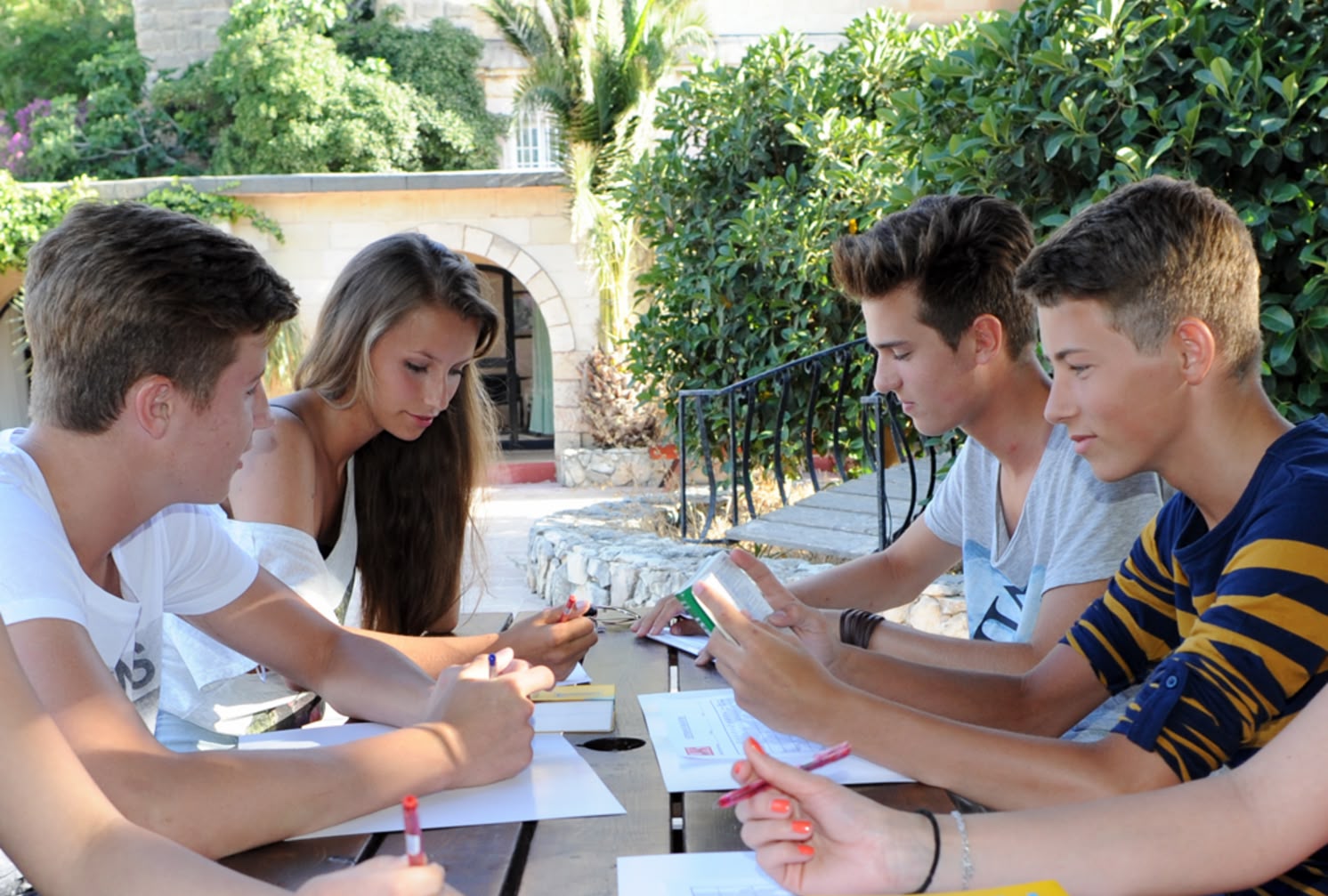
Definitely one of the most beautiful English language schools in Malta.
About the English school »When discussing ongoing past actions, the tense Past Progressive, also known as Past Continuous, is used in English. This tense puts emphasis on the duration or permanence of a past action.
The Past Progressive tense will be discussed in more detail below, along with examples of how to form and use it in sentences. Additionally, we'll provide you with a list of key words that you can use to determine when to use the Past Progressive tense.
The auxiliary verb "to be" in the past tense ("was" or "were") and the verb in the gerund (-ing form) are combined to create the past progressive tense. Several verbs in the Past Continuous tense are listed below. This will help you understand the Past Continuous tense's functions better.
| Past Progressive | Example |
|---|---|
| I was talking | I was talking to my friend on the phone when the power went out. |
| You were reading | You were reading a novel while I was watching TV. |
| He was running | He was running in the park when it started to rain. |
| She was walking | She was walking her dog in the park when she saw her friend. |
| They were watching | They were watching a sunset over the sea when a storm came up. |
The past progressive tense is easy to learn and use with any kind of verb because there are no irregularities in it. You simply need to become familiar with how the past tense and rounded forms of the irregular verb "to be" are formed. The past progressive tense will be easy for you to use once you have mastered these fundamentals.
When describing a past state, action, or process that lasted for a while, you should use the Past Progressive tense in English. This English past tense is used to emphasize that a continuous situation existed in the past.
The Past Progressive tense is frequently used to talk about a background action that was stopped in the past by another action. It can also be used to describe past behaviors that persisted for a very long time. The past progressive tense is frequently used in spoken English to describe a fleeting past action. It is not required to have occurred over a long period of time.
To learn more quickly when to use the Past Continuous tense when speaking or writing in English, refer to our list of signal words for the past continuous. Please be aware, however, that the Past Continuous tense is not always used simply because these signal words are present. They merely act as a signal to use the Past Continuous tense.
| Signal word | Example |
|---|---|
| While | While I was cooking dinner, my kids were doing their homework. |
| As | As I was getting dressed, my phone rang. |
| At that moment | I was playing video games at that moment. |
| At 8 o'clock yesterday | At 8 o'clock yesterday, we were walking to school. |
| When | When I was walking to the store, I saw my neighbour. |
| At the time | At the time my train arrived, I was standing on the wrong platform. |
| All day yesterday | I was studying all day yesterday. |
| During | During my lunch break, I was talking to my colleagues. |
| In the middle of | In the middle of the meeting, Dan was looking out of the window. |
| For hours | For hours, I was studying maths last week. |
| At the same time | I was eating dinner at the same time as my friend called me. |
| At noon yesterday | At noon yesterday, Pete was finishing his task for the day. |
| Constantly | The phone was ringing constantly. |
| Continually | We continually were speaking about the new product line. |
| Still | We were still watching the film we started an hour ago. |

Definitely one of the most beautiful English language schools in Malta.
About the English school »
English courses for adults (Business English also available).
About English courses »
Supervised English programme for kids between the ages of 14 and 21.
English classes for kids »